As was mentioned in Color Therapy, Color Meanings & Symbolism, and Color Psychology we’ve created a variety of Color Symbolism & Meanings Charts. The first color symbolism chart combines 6 of the most common colors, what they symbolize, and common meanings. We’ve also created individual color meanings charts based on those six colors. Feel free to link to this page or the charts, just follow the directions below.
We also have art & art therapy badges in a variety of sizes and colors. You can easily add these to your site or blog as well.
Here are the available color meaning charts:
- Main Color Meanings & Symbolism Chart (contains 6 colors)
- Color Symbolism Chart – RED
- Color Symbolism Chart – ORANGE
- Color Symbolism Chart – YELLOW
- Color Symbolism Chart – GREEN
- Color Symbolism Chart – BLUE
- Color Symbolism Chart – VIOLET/PURPLE
Main Color Meanings & Symbolism Chart – 6 Colors
This first chart contains the 6 main colors (red, orange, yellow, green, blue, violet) and their popular meanings/symbolism. You can view the full color chart here, or by clicking on the image above.
Link to these charts:
Click anywhere in the text area below to auto-select the code. Then copy and paste the code wherever you would like to link to the color meanings & symbolism chart!

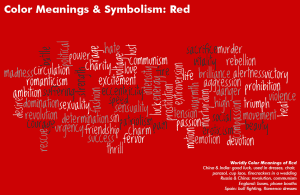
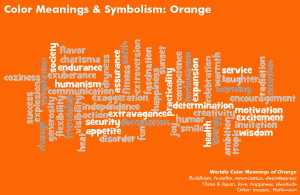
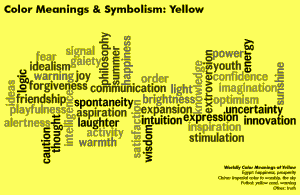
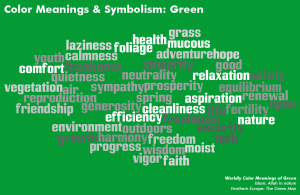
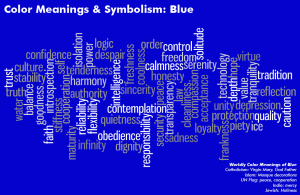
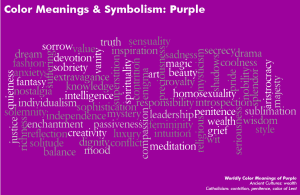
These color charts are incredible. I just posted the link on the resources page of my counseling site. What I most appreciate is that the charts foster each individual’s meaning for a certain use of color, aiding in (not manipulating) the process of ingsight. Thank you!
Thanks Kjersten, we’re glad you like them!
Very interesting, innovative, and creative. Used on my blog on FB and I believe it will be appreciated by my fans and friends. Thanks.
I have a blog on my site and wrote an article about using color in counseling.
Thanks for the information it was very useful I was doing some research on “how to pick the right colors for a house” and your article help me to understand better.
I love this visual and would like to use it when I teach archetypes to my AP seniors. Is it available in an actual wall poster?
This is phenomenal work. I am sure you have been asked this before but I’lll ask anyway. Have you considered doing the indigo characteristics ? They are the only energy center of the body not mentioned. I would be happy to provide what I feel may be the positive and negative characteristics of that color , if youd like….Great work Regards,
Dr. Beef
I’ve written a paper on this specific topic and you guys who’ve made this add a whole new meaning to what I understood about this before I read it. Keep it up.
P.S. Thanks!
Thanks Alex!
I love these thanks!
Well and good to be explaining the meaning of colours and psychology of same, but this seems to be sorely lacking in thoroughness. There is more to whether one likes blue yellow or red. What if ones favourite colour is Peacock blue but cant stand baby powder blue?? and what if one loathes mustard yellow but doesnt mind canary yellow? What if one loves deep burgandy red, but cant abide by orange fire engine red? What if one loves the colour purple, but cannot wear it, so they have their bed linen in it? This is way too basic leads to inconsistency. I think more accurate summary would be whether one likes Spring, Summer, Autumn or Winter colours, ie the hues of the colours ie red is not necessarily only a hot colour a deep rose red is considered a winter colour, as with those with black hues added to the colours. Just thought let you know this doesnt even scratch the surface. So much more to it and Im no expert which is why you should consider completing this. Its sorely lacking and misleading if its meant to be informative
I, aside from writing herbal history and folklore, love symbolism and have been looking for the symbols within the plants and animals in religious and medieval paintings.
I mainly want to tell you that though the information given within the color squares is very creative and contains more information than I have found in any one place before, I have had several eye surgeries and the use of the colors and colors within colors in the squares, especially pastel colors, makes reading them all virtually impossible.
Is there a black and white copy that can be accessed?
Thank you,
Mica
many colors that we see but all of the colors that we see is have a meaning like red the meaning of red is love thats all ….
Love it.love it , and LOVE IT!
Hey thanks it helps a lot and will use it in my practise
Frankly Speaking, I loved the color charts and they are very inspiring. The Color Red has mysteriously attracted me first to stay a little longer on your blog. I have recently read this article about The Mysterious Power of Red Color and I can see how the chart and the article share a lot in common.
Awesome! Used this for my children’s literature class, when we discussed illustrations
Thank you, this helped me a lot when writing my essay on the language and color usage of F. Scott Fitzgerald.
Love this. I am training as a play therapist and am finding the symbolism of play and colour incredible. Thank you
These are amazing charts, but I really wish there were ones for white and aqua. Do you guys do requests?
Love this. Thank you..
I was curious if undertones of colours had an impact on psychology. For example, I want to have a painting in my meditation space with apple green with accents of aubergine purple (two cool colours with warm (gold/red) undertones) if that would have a significant impact in comparison to a painting that has aquamarine and Crown royal purple (two cool colors with blue undertones) on someone’s moods? Thanks!
There are subtle aspects of colour, not only the shades, but translucency, for instance, with sunlight through leaves and petals, with iridescence of insect wings, and watery colours – sea, lakes, etc. Plus made objects of glass, clear, translucent and reflective. And the mystery of whether everyone sees the same hue in the identical way and responds individually due to personal associations..
I am wondering where your research for these charts is? I am performing art therapy research of my own and would like to know so I could possibly use these charts and their citations as a reference! Thank you